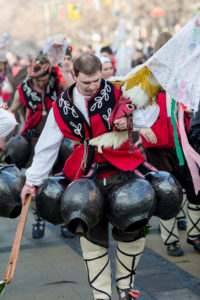 When Laban was a military cadet, the Austro-Hungarian Empire stretched over the whole of southeast Europe and into the Balkans, embracing peoples of diverse races, nationalities, customs, and religions. To escape from his duties in the dreaded machine shop, Laban volunteered to direct a festival of cadets. This would include national dances of the various groups represented in the military academy – Germans, Hungarians, Slovaks, Poles, Bohemians, Styrians, Tyrolese, Italians, Ruthenian Russians, and Herzegovinians.
When Laban was a military cadet, the Austro-Hungarian Empire stretched over the whole of southeast Europe and into the Balkans, embracing peoples of diverse races, nationalities, customs, and religions. To escape from his duties in the dreaded machine shop, Laban volunteered to direct a festival of cadets. This would include national dances of the various groups represented in the military academy – Germans, Hungarians, Slovaks, Poles, Bohemians, Styrians, Tyrolese, Italians, Ruthenian Russians, and Herzegovinians.
According to Laban, this idea was met with great enthusiasm, and all the cadets “wanted to bring their national characteristics into the limelight.” As planning for the festival proceeded, however, Laban “began to understand something of the difficulties which must have been encountered by the various privy councilors” of the Austro-Hungarian Empire, “who travelled endlessly from one region to another laboring to maintain an always rather precarious peace and sense of union.”
Laban saw this precarious sense of union reflected bodily, for he had to choose the best movers to perform the different national dances. “When I did this it was shattering to see the deeply rooted differences between nationalities coming to light… there were always some who were unable to adapt themselves to peculiarities of movements that were alien to them.”
Fifteen years after Laban’s festival of cadets, the precarious peace of Europe would be shattered when a Serbian terrorist assassinated the Crown Prince of the Austro-Hungarian Empire and his wife, starting the First World War. As we celebrate the 100th anniversary of the end of this “War to End All Wars,” European peace and unity remain precarious. It is difficult to follow Laban’s footsteps without being aware of how often borders have been redrawn in this part of the world, and the human toll such Balkanization has extracted.
